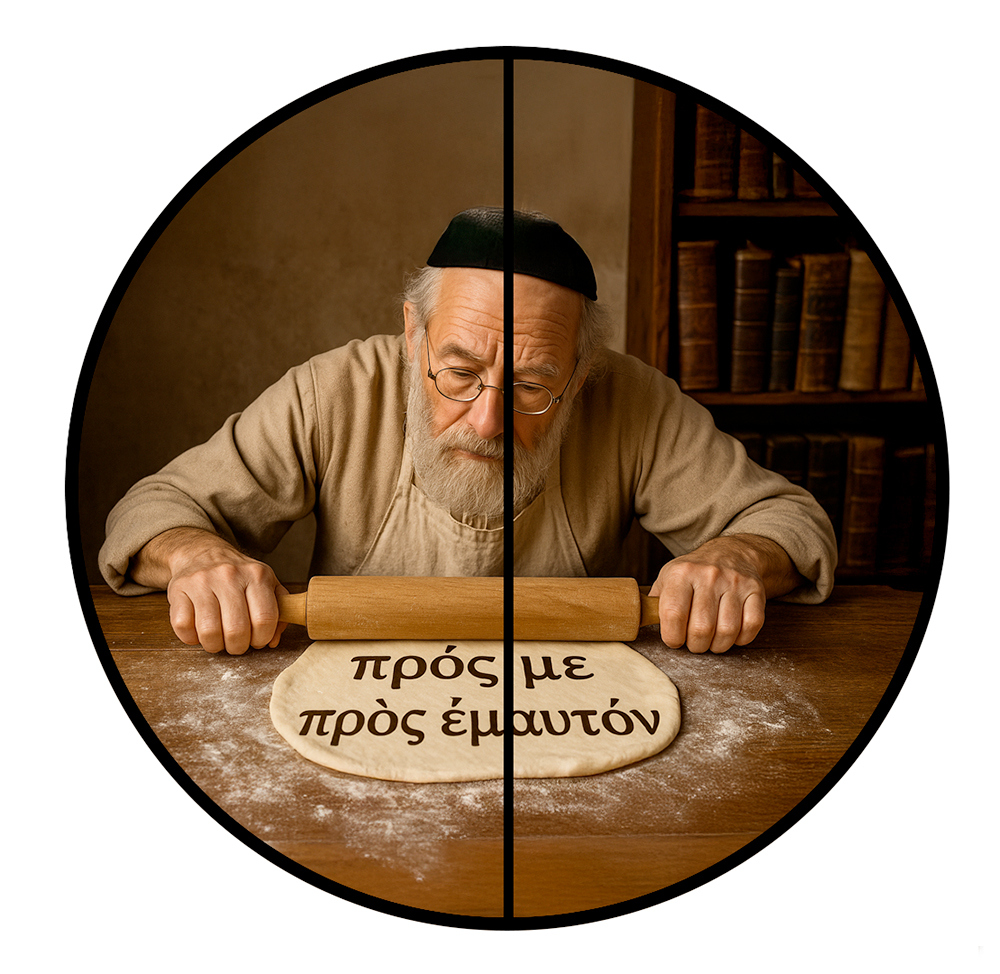 John 12:32
John 12:32

|
Strongs 2504
[list] Λογεῖον Perseus kagō κἀγὼ even myself PPro-N1S |
|
Strongs 1437
[list] Λογεῖον Perseus ean ἐὰν if Conj |
|
Strongs 5312
[list] Λογεῖον Perseus hypsōthō ὑψωθῶ I am lifted high V-ASP-1S |
|
Strongs 1537
[list] Λογεῖον Perseus ek ἐκ from out Prep |
|
Strongs 3588
[list] Λογεῖον Perseus tēs τῆς the Art-GFS |
|
Strongs 1093
[list] Λογεῖον Perseus gēs γῆς earth N-GFS |
|
Strongs 3956
[list] Λογεῖον Perseus pantas πάντας all Adj-AMP |
|
Strongs 1670
[list] Λογεῖον Perseus helkysō ἑλκύσω will draw V-FIA-1S |
|
Strongs 4314
[list] Λογεῖον Perseus pros πρὸς toward Prep |
|
Strongs 1683
[list] Λογεῖον Perseus emauton ἐμαυτόν myself/oneself PPro-AM1S |
ἐμαυτόν = my own self or oneself
And if I, myself am also exalted high from out of the Earth, I will draw everyone toward oneself!"97a
"Hmm.""They're clearly the same!"
And I, if I be lifted up from the earth, will draw all to myself.
And I, if I be lifted up from the earth, I will draw all to Myself.
Error retrieving verse.
Footnotes
| 97a | Oneself John makes a rare and unique usage of the reflexive pronoun for self, ἐμαυτοῦ. The phrase ἑλκύσω πρὸς ἐμαυτόν is normally rendered as "I will draw toward myself" but this is less than accurate. The emphasis is on the reflexive ἐμαυτόν "self" so this rendering loses the reflexive aspect. On the other hand, it also means "I will draw toward oneself," employing the reflexive pronoun ἐμαυτόν to indicate that the action is directed back upon the subject’s own person. This reflexive construction is the standard and classical Greek method for expressing an action oriented toward oneself, as opposed to simply "toward me" (πρός με), which lacks an inherent reflexive force and denotes a non-self-referential direction. Attested Usage The phrase ἐν ἐμαυτῷ συννοεῖσθαι (to think in or with oneself), attested in Euripides’ Orestes (line 634), illustrates the dative reflexive pronoun ἐμαυτῷ employed with ἐν to express internal reflection or contemplation “within oneself.” More relevant is πρὸς ἐμαυτόν, found in Aristophanes’ Ranae (53) and other sources, which uses the accusative reflexive pronoun ἐμαυτόν with the preposition πρὸς to indicate motion or direction “toward oneself,” often with a strengthened or intensified reflexive sense. These examples attest to the nuanced deployment of the first-person reflexive pronoun in classical Greek, where:
This unique usage is not accidental. For example, in the Johannine corpus, the distinction is evident: πρός με in John 5:40 expresses "toward me/myself" without reflexive emphasis, while πρός ἐμαυτόν in John 12:32 underscores a reflexive direction, "toward oneself." This illustrates how ἐμαυτόν uniquely signals the inward, self-referential dimension of the action, which cannot be conveyed adequately by the personal pronoun alone. Thus, to express "draw toward oneself" reflexively in Ancient Greek, the use of πρός with the appropriate reflexive pronoun (ἐμαυτόν for first person singular) is effectively the only idiomatic and precise formulation. In otherwords, if one intended to say "I will draw all toward one's own self" in Greek, this is the only way to say it, as there is no separate Greek word for "oneself." This is especially evident in contexts where the reflexive pronoun is used with verbs or phrases implying control, self-mastery, or introspection. For example, Plato’s ἐν ἐμαυτοῦ (sc. οἴκῳ) εἶναι (“to be master of oneself”) shows the pronoun taking on a possessive and reflexive nuance — not simply referring back to the subject, but emphasizing ownership or dominion over one’s own self. Flattening Self The real question then, is whether there is any point to John's switching back and forth between using πρός με and πρὸς ἐμαυτόν to say the same exact thing to the common person? (cf. LSJ ἐμαυτοῦ) |